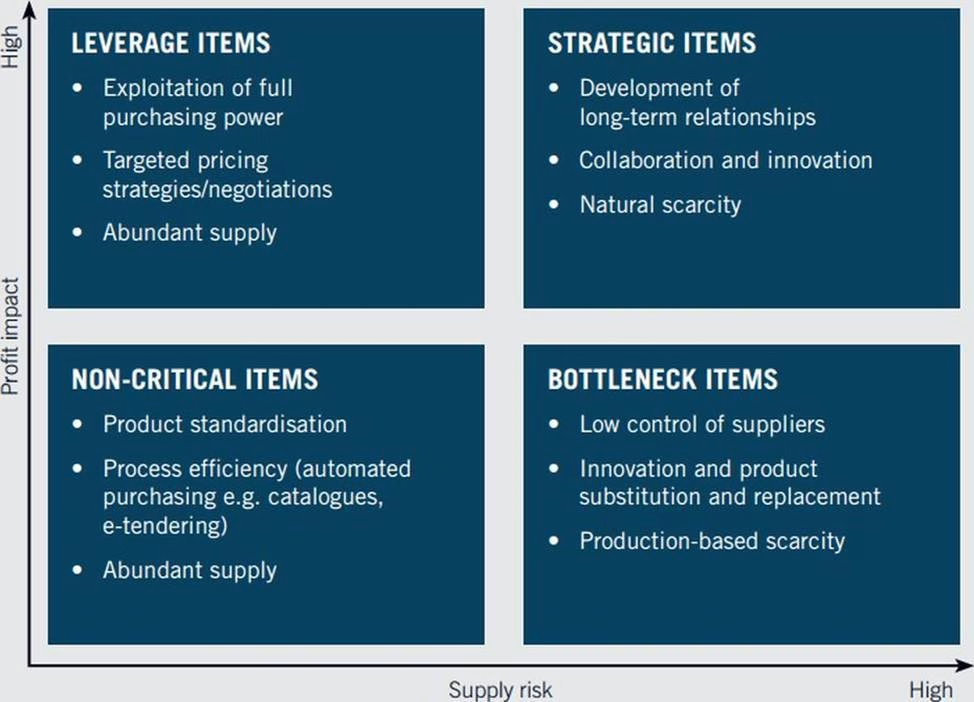CIPS L4M2 Defining Business Needs Online Training
CIPS L4M2 Online Training
The questions for L4M2 were last updated at Apr 09,2025.
- Exam Code: L4M2
- Exam Name: Defining Business Needs
- Certification Provider: CIPS
- Latest update: Apr 09,2025
The position of a product in its life cycle can affect the price that suppliers set. Is this statement correct?
- A . No, in market economy, the state decides the price of all goods and services
- B . Yes, each stage in product life cycle requires different levels of investment in promotion and distribution
- C . No, customer’s perception of value is the ultimate determinant of the suppliers’ price
- D . Yes, it is always the only factor determining the price
A CPO is making a business case for acquiring a new computer system. He has set out objective, generated options, cost and benefit of each option and implementation plan.
Which of the following elements should be included in the business case?
- A . Risk assessment
- B . Operation management
- C . Invitation to tender
- D . Contract management
A CPO is making a business case for acquiring a new computer system. He has set out objective, generated options, cost and benefit of each option and implementation plan.
Which of the following elements should be included in the business case?
- A . Risk assessment
- B . Operation management
- C . Invitation to tender
- D . Contract management
A CPO is making a business case for acquiring a new computer system. He has set out objective, generated options, cost and benefit of each option and implementation plan.
Which of the following elements should be included in the business case?
- A . Risk assessment
- B . Operation management
- C . Invitation to tender
- D . Contract management
A CPO is making a business case for acquiring a new computer system. He has set out objective, generated options, cost and benefit of each option and implementation plan.
Which of the following elements should be included in the business case?
- A . Risk assessment
- B . Operation management
- C . Invitation to tender
- D . Contract management
A CPO is making a business case for acquiring a new computer system. He has set out objective, generated options, cost and benefit of each option and implementation plan.
Which of the following elements should be included in the business case?
- A . Risk assessment
- B . Operation management
- C . Invitation to tender
- D . Contract management
A CPO is making a business case for acquiring a new computer system. He has set out objective, generated options, cost and benefit of each option and implementation plan.
Which of the following elements should be included in the business case?
- A . Risk assessment
- B . Operation management
- C . Invitation to tender
- D . Contract management
What is the document that defines the activities, deliverables and timelines a supplier must carry out during contract performance?
- A . Statement of work
- B . Project initial document
- C . Framework agreement
- D . Work instruction
A procurement manager is writing a conformance specification for a non-core component. She thinks that if the requirements in specification are higher than ISO standards, her company can achieve greater cost-savings.
Is the procurement manager’s opinion correct?
- A . No, because higher specification may incur additional costs for the buyer
- B . No, because higher requirements in specification, the greater bargaining power of buying organisation
- C . Yes, because optimising the specification is the only method to achieve value for money
- D . Yes, because higher requirements will help buying organisation find the best supplier
British Steel needs to source a set of instruments that will improve quality of steel. Without these instruments British Steel will loss control of the temperature. The bucket may freeze up, or if it is too hot it leaks out of the casting process, damaging the machine. There is limited supply on the market and quality varies greatly.
Which of the following will be the most appropriate managing approach to procure these items?
- A . Bundle these instruments into larger contract
- B . Leverage market competition to drive down cost
- C . Seek continuity of supply
- D . Form partnership with supplier
Latest L4M2 Dumps Valid Version with 144 Q&As
Latest And Valid Q&A | Instant Download | Once Fail, Full Refund


